Homeless Cat Management Team TNRs 87 Cats in One Day!
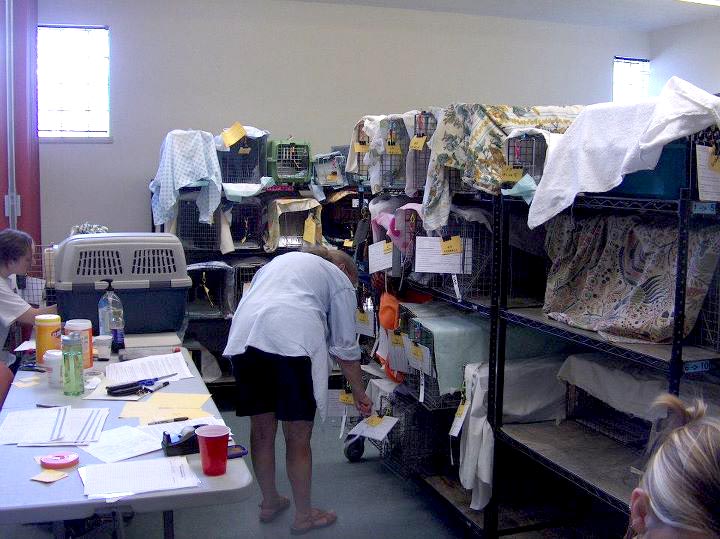
At their July 29, 2012 no-charge TNR clinic the Homeless Cat Management Team (HCMT) in Pittsburgh spayed and neutered 87 cats. Think about that for a minute now…spay and neuter surgeries for 87 stray and feral cats in one clinic in one day.
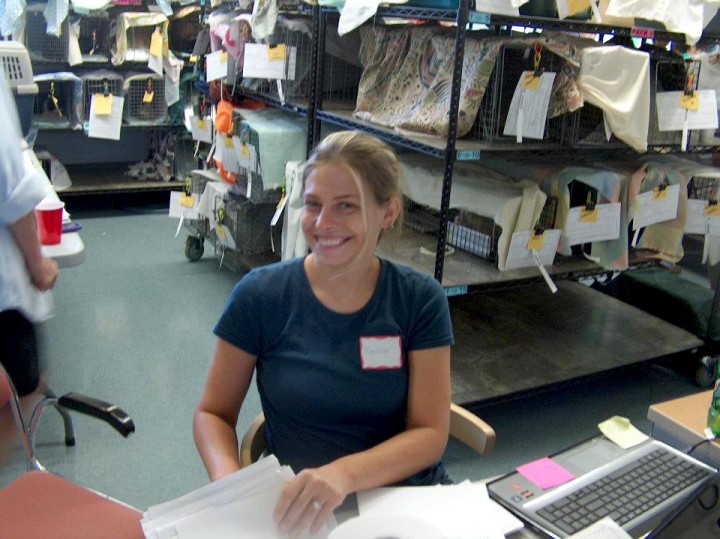
“This was our first no charge clinic at the new building and we accommodated 87 cats. Volunteers worked from 7 am until 9 pm,” said Michelle Miller, Executive Administrator with the HCMT, who personally put in about 20 hours for the sake of trapping as many stray and feral cats as possible the night before the clinic. Michelle is always on the go to help find, trap and rescue stray and feral cats, and is the voice of the Homeless Cat Management Team.
The volunteers included three veterinarians: Dr. Donna Hughes of the ARL and Dr. Becky Morrow of HCMT did the bulk of the surgeries, and Dr. Deb Simmonds, who just moved here from Maryland, volunteered a few hours as well.
And the discussions in the weeks before of where cats needed to be trapped, who needed traps, where there were kittens, who might need to be moved and who could transport cats was constant to be certain to get as many cats into this clinic as possible. Now, in midsummer, there’s still plenty of time for an unspayed female to have another litter and possibly a second before winter. Catching them now prevents that and helps keep colonies of stray and feral cats at more constant numbers.
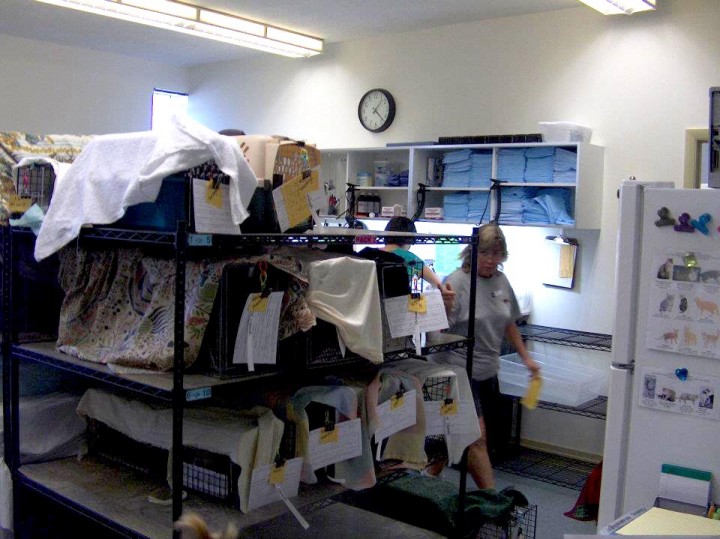
The cats receive an exam, vaccinations and a flea/tick treatment as well as other veterinary care if it’s needed. In addition to that, one kitty who had to have an eye removed and another had to have all but one tooth removed.
The surgeries included 9 pregnant kitties, three of whom were carrying seven kittens and two who were carrying five. The thought of spaying a pregnant cat may not be pleasant, but that is already 31 kittens who won’t be born in the outdoors as part of a stray or feral colony, to possibly continue the pattern of reproducing until a human can catch them and surgically put a stop to it. And with the reproductive lives of 87 cats effectively put to an end, imagine how many other kittens won’t end up out on the streets or in shelters. It’s all a big win for managing the stray and feral cat population in the Pittsburgh area.
And not a moment too soon since kittens keep popping up everywhere. In the four days since the Sunday clinic I’ve encountered posts and e-mails and other messages mentioning the rescue of about 37 other kittens ranging in age from newborn to about six weeks, most of them abandoned.
Volunteers and supporting HCMT and the clinic
Trapping and transporting all these cats to and from the clinic took dozens of individuals. Setting up the clinic facility and managing the clinic day took even more individuals. And I’m still trying to imagine 87 spays and neuters in one day. All of it took hours of footwork, all from volunteers, because they care about the health and welfare of cats in our community. HCMT can use your support to keep the clinics going and to help spread the word, any donation goes directly to the clinic and the cats.
Upcoming clinic dates
Fast Track $30 per feral
8/19 SUN
9/9 SUN
10/6 SAT
11/4 SUN
12/8 SATNo-Charge (ferals only)
9/23 SUN
10/21 SUN
11/18 SUNKeep those dates in mind, and read below about how HCMT works.
If you are a colony manager, get your traps ready and make your appointment.
If you’re not yet registered as a colony manager, call now to register.
Register as a colony caretaker, then register for the clinic.
- First, you need to register as a colony caretaker in order to be able to have cats spayed and neutered by HCMT. Call 412-321-4060 and leave a message; someone will return your call and complete your registration as a caretaker.
- Second, you need to pre-register for the clinic you want to attend, and you will receive a confirming phone call to be included in the clinic. Cats MUST arrive in a standard humane box trap (Havahart, Safe-guard, Tomahawk, Tru-Catch, etc.) for the safety of all involved, with the exception of rescue cats.
All clinics are held at the HCMT’s new clinic at 207 Allegheny St, Tarentum, PA 15084.
About the clinics
Homeless Cat offers both no-charge and Fast Track clinics where feral cats receive all the above care and a mandatory ear-tipping, the universally-recognized sign of a cat who has been “trapped-neutered-released”. The no-charge clinic is just that—neuter, vaccinations and care at no charge for feral cats. They advise that the no-charge clinics fill up quickly, so they also offer the Fast Track clinic which offers the same service for $45 if the cat in question can’t wait.
As part of the clinic feral cats will receive:
- spay/neuter
- rabies vaccination
- penicillin shot
- analgesic
- treatment for fleas, ticks and ear mites
- mandatory ear-tipping
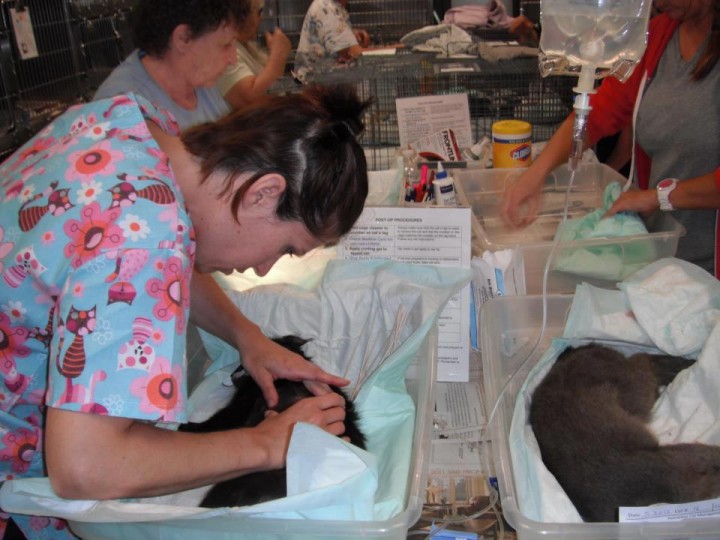
Rescue cats
HCMT clinics are generally reserved for cats who are part of a Trap-Neuter-Return (TNR) program and who will be returned to their colony, not taken into a home as a pet or entered into a shelter, rescue or other animal adoption program. This helps the organization and individuals spay and neuter as many homeless outdoor cats at the least cost possible for the person managing the cats, reducing future populations with each surgery.
However, they’ve recently begun to offer services to “rescue” cats on FastTrack clinic days, because it’s sometimes not possible to put a cat back outside because of health or circumstances. Also, the person who rescued the cat has often been feeding and caring for it for some time, a bond grows between them and instead of putting the cat back outside, the rescuer will take them in, an even better solution for the cat, and also the person.
FasTrack clinics are usually $45 per cat, but for rescues the pricing is a little different:
- $60 for females
- $35 for males
- Rabies shots are an additional $8
Also, rescue cats do not have to be in humane traps, which is a requirement of strays and ferals, they can come in carriers.
City of Pittsburgh Spay and Neuter Program
At the end of February Pittsburgh’s City Council approved a program sponsored by Council President Darlene Harris that will provide a voucher for up to five pets per household to City of Pittsburgh residents. The bill allocates $170,000 toward the program, yet the city spends much more than that in combined animal control costs. Council decided that spaying and neutering pets of city residents will result in reduced costs immediately and into the future. Read more about it here, and if you are a City of Pittsburgh resident you can also download a form here: City of Pittsburgh’s free spay and neuter program.
The Homeless Cat Management Team is participating in this but is not yet on the form. Simply write them in when you choose your “preference” of where to get surgery performed, on the application.
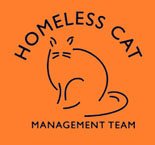
About HCMT
If you are near Pittsburgh and manage a colony of stray and feral cats or are feeding stray or feral cats anywhere outdoors, you need to know about the Homeless Cat Management Team and how they can help you care for your colony, especially with their spay and neuter clinics.
If you’re not near Pittsburgh, read on and see if there may be an organization that can help you do the same for strays and ferals near you. I’ve also included links to information about caring for strays and ferals in winter and how you can help stray and feral cats in general.
This is especially important now, as later summer and autumn kittens will begin going into their first heat as soon as the lengthening days turn their little biological clocks to “on” along with their mothers. Cats can go into heat as young as four months and can reproduce with parents and siblings.
HCMT and Animal Care & Welfare
HCMT is in a matching grant collaboration with Animal Care & Welfare to finish paying for their new clinic: up to $50,000 in donations toward HCMT’s permanent clinic will be matched by AC&W. Donations can be sent to HCMT, P.O. Box 100203, Pittsburgh, PA 15233-0203 or through JustGive at the HCMT website www.homelesscat.org. If you donate, include a note on the memo line about “permanent clinic” or “capital campaign”.
You can also help HCMT both generally with day to day fundraising and with outreach and fundraising for the new clinic with your volunteer efforts such as public relations, coordinating pro-bono services for printing and media, outreach, grant writing and even researching potential salary and benefit packages for clinic employees. Check Our Future on the HCMT website.

The issue of feline overpopulation
Cats left in colonies will produce as many kittens as their bodies will allow if left unaltered, leading to disease and suffering and way too many kittens who then go on to produce more kittens.
It’s not likely, but a cat can have up to five litters in a year, bearing 6 or more kittens per litter over the course of as many as ten years, which adds up to about 300 kittens from one female cat in the course of her lifetime, not to mention the kittens her kittens produce.
More realistically, say she only has three litters of four kittens per year as Mimi did, that’s still a dozen new kittens, and even with an average 50% survival rate, that’s 60 kittens born over five years. Now add in all the kittens that those surviving kittens produce in addition to their mother, and it’s just out of control.
Ever-expanding colonies are also often the targets of abuse and “extermination”. Shelters are already full of cats who need homes, so rescue is unlikely.
The Homeless Cat Management Team offers the “Trap-Neuter-Return”, or TNR, service for feral cats which is an internationally-recognized method of helping to solve these problems by stopping the cycle of kittens and overpopulation. They just can’t produce any more kittens—and they don’t engage in the most annoying feline behaviors, such as spraying, calling for mates, caterwauling and fighting, noisy and odorous activities that often turn people against cats and colonies of strays and ferals.

This service is not available for household pets or even cats simply kept outdoors if they are owned by a person. This is intended to reduce stray and feral populations in colonies, cats who aren’t owned by anyone, so before registering for the clinic you must first register as a colony caretaker. For more details on the process of registering yourself as a colony caretaker and registering for a clinic, please visit the Homeless Cat Management Team’s website at www.homelesscat.org. You can also find other clinic dates and information on how you can help feral cats in many other ways.
If you’re not near Pittsburgh and you’d like to find out if there is a TNR organization near you, visit the Feral Cat Organizations listing on the Humane Society of the United States’ website. You can also find information on the Alley Cat Allies’ website under Make Connections. You can find yet more resources on the ASPCA website under TNR and Colony Management.
You don’t need to manage a colony top help feral cats. You can donate to, assist or even start a local TNR program in your area. The HSUS’s article What You Can Do to Help Feral Cats covers finding local organizations, listing options and how to pursue helping or starting a local organization, and they also have a Program Fund that you can donate to in order to assist them in helping local organizations form and operate.
Alley Cat Allies is all about assisting colony managers, and you can also donate to this organization in order to help the larger effort of local organizations.
And Alley Cat Allies has what I think is the most comprehensive information on just what feral cats are and how to care for them, including several articles on winter care, outdoor shelters, feeding and providing water in winter and avoiding hazards from chemicals like road salt and anti-freeze.
In addition to the articles, they also have a Video Library that demonstrates how to trap ferals, how to care for them, the clinic procedures and even how to speak to the public about feral cats.
You’ll also find information on other topics, such as feeding strays and ferals, letting your cat mix with strays and ferals and legislation around the country and in Canada regarding their treatment.
Here are the quick links to the sites above:
• Alley Cat Allies
• Alley Cat Rescue
• HSUS Feral Cat downloadable handbook
It’s difficult for we who love cats not to think of each of them as potential companions for us, but true feral cats were never pet cats and while they can be tamed they are a few generations removed from human contact and they’ve adapted to life without the assistance of humans. The TNR program stops the cycle of reproduction and provides them with vaccinations and care that help to protect the larger society of all cats, but the intent is not to provide them with ongoing veterinary care as we do our indoor cats, or to find them permanent homes.
That’s not to say that feral cats can’t come in. I’ve seen some feral cats who’ve been brought in to shelters for various reasons, usually because a colony was threatened by abuse or extermination, and I even rescued a single cat from a feral colony years ago, my little Moses who was near death from starvation, literally laying down and not moving she was so far gone. She was young and learned to live in the house, and she and I enjoyed nineteen years of a close and loving relationship, but I could never pick her up, she was terrified of other people though she was timid and never acted out.
A friend adopted a rescued feral from a shelter where she volunteered, and MacKenzie mingles with the other cats but has her rules, especially the one about not being put in a carrier or she’ll offer to slice open your hand, and other clever cat tricks.
Find a low-cost clinic near you
Spaying and neutering surgery can be done for as little as $25.00.
 LOW COST SPAY/NEUTER INFORMATION FOR THE PITTSBURGH AREA AND BEYOND.
LOW COST SPAY/NEUTER INFORMATION FOR THE PITTSBURGH AREA AND BEYOND.
Also look in the menu on this blog under “Assistance” for links to local shelters and spay/neuter clinics plus a searchable database to find the clinic nearest you anywhere in the United States and parts of Canada.
—————————————
All images and text used on this site are copyrighted to Bernadette E. Kazmarski unless otherwise noted and may not be used in any way without my written permission. Please ask if you are interested in purchasing one as a print, or to use in a print or internet publication.


Pingback: The Creative Cat - Meet Teena Tiny, Who Is Not a Farm Cat!